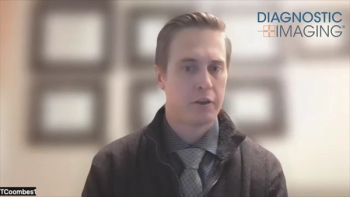
New AI Algorithm for Abdominal Aortic Aneurysm Detection on CTA Gets FDA Nod
Viz AAA is reportedly the first artificial intelligence (AI)-enabled algorithm to garner FDA 510(k) clearance for the detection of abdominal aortic aneurysm.
Over one million people in the United States have an abdominal aortic aneurysm (AAA).1 Aortic aneurysms claimed the lives of 9,904 people in the U.S. in 2019.2 Researchers have noted that mortality rates with AAAs could be underestimated as they may cause up to five percent of 200,000 sudden death cases annually in the U.S.3
However, Viz AAA (Viz.ai), an emerging artificial intelligence (AI)-powered algorithm, may facilitate earlier detection and treatment for people with AAAs.
Philip Batista, M.D., noted the majority of people with AAA are asymptomatic and lack awareness of the disease until they have a rupture. He called Viz AAA a significant advance for this high-risk population.
“This algorithm is a powerful new tool for healthcare professionals to more readily identify and capture individuals with AAA and, importantly, automatically refer those at imminent risk for rupture,” said Dr. Batista, an associate program director of Vascular and Endovascular Surgery Residency and assistant professor of surgery at the Cooper Medical School of Rowan University in New Jersey.
Viz.ai added that Viz AAA can be integrated into existing hospital workflows and will be available through the Viz AORTIC Module, an AI platform geared toward facilitating accelerated treatment of aortic pathology.
(Editor’s note: For related content, see “
References
1. Kent KC, Zwolak RM, Egorova NN, et al. Analysis of risk factors for abdominal aortic aneurysm in a cohort of more than 3 million individuals. J Vasc Surg. 2010;52(3):539-48.
2. Centers for Disease Control and Prevention (CDC). Aortic aneurysm. Available at:
3. Schermerhorn M. A 66-year-old man with an abdominal aortic aneurysm: review of screening and treatment. JAMA. 2009;302(18):2015-22.
4. Viz.ai. Viz.ai is first to receive FDA 510(k) clearance for AI algorithm for abdominal aortic aneurysm. Available at:
Newsletter
Stay at the forefront of radiology with the Diagnostic Imaging newsletter, delivering the latest news, clinical insights, and imaging advancements for today’s radiologists.




























